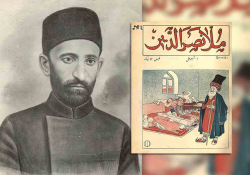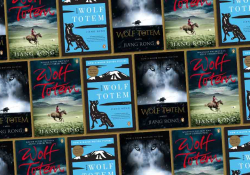“Language as Refuge”: A Letter to the Editor

Dear editors of World Literature Today,
In her March 2025 column “Language as Refuge,” Veronica Esposito explores questions of language development and loss, responding to the question: “What happens when a language dies?” Unfortunately, the essay overlooks key elements of that topic: linguicide, linguistic rights, and language preservation.
Esposito implicitly acknowledges that language death can result from political causes but stops short of explicitly naming linguicide (the purposeful destruction of a language); neither does she critically examine the perpetrators. As renowned Mixe scholar and linguist Yásnaya Elena Aguilar Gil famously said in a 2022 address to the Mexican congress: “Languages do not die. They are murdered.” (We encourage Esposito, and all readers of this letter, to seek out Aguilar Gil’s excellent 2024 book This Mouth Is Mine, translated by Ellen Jones and published by Charco Press, which delves into this urgently important subject.)
Esposito alludes to linguicide by mentioning that “the forces of assimilation” can be “quite purposeful,” offering the example of Swahili in Tanzania. She writes that Swahili was “promoted by government agents as a way of building the nation, with the approval of at least some of those whose languages were relegated in the process.” This uninterrogated nationalism, and the tacit suggestion that the involvement and “approval” of “at least some of those whose languages were relegated” (to . . . what? death?) somehow makes linguicide less insidious, are distressing. In a 2010 article on the “Swahilization” of ethnic languages in Tanzania, linguist Nobuko Yoneda concluded that “the slow, almost surreptitious replacement” of Matengo and other mother tongues “is definitely taking place” as a result of the institutionalization of Swahili, alongside English. That is to say, it was linguicide.
Esposito admits that, while “losing languages” “feels innately . . . like a bad thing,” this “nebulous feeling” pales in comparison to her “sense of justice around other social causes.” Whether or not one of the world’s 3,193 endangered languages is finally killed on any given day, she insinuates, is not a particularly urgent “social cause.” The author’s reluctance to acknowledge the linguistic rights of speakers of minoritized languages worldwide—and the ongoing violations of these rights—dismays us, especially in a column for World Literature Today.
We would expect columns appearing in WLT to recognize the vast linguistic inequities resulting from settler colonialism, racial capitalism, and accelerating extractivism. Yet Esposito seems uninterested in the profoundly asymmetrical relation between a US-based writer who muses on the possible impacts of “losing languages” and people worldwide—particularly in and from the Global South—who are fighting to keep their home languages and their linguistic communities intact. For them, the scale of loss is not at all “nebulous.” It is devastating. As Nahua writer, anthologist, linguist, and critic Martín Tonalmeyotl wrote in 2019, “With the loss of the living (oral) language, one’s own history is lost.”
The hegemonic dominance of English and the lack of appreciation for minoritized languages (and the speakers who keep them alive, against all odds) facilitate the publishing of this essay, which seems to suggest, in a sort of social Darwinism, that languages cease to exist when they are no longer useful: they “dwindle,” they are “lost,” they are replaced by others during processes of “purposeful assimilation.” This mindset is not unique to Esposito but pervasive throughout the anglosphere. So much so that the organization co-directed by Ross Perlin, the Endangered Language Alliance, is misidentified by Esposito as the “English Language Alliance.” It is a revealing error, all the more telling that it remains uncorrected one month after this essay appeared online. On the flip side, it is near-impossible for English speakers to imagine a world in which English is endangered, nor to meaningfully consider what it would mean to lose access to one’s mother tongue. When Esposito does attempt this kind of thinking, she only reinstantiates the hegemony of English, writing, “It is perhaps the most compelling argument I can imagine for language-preservation to try and imagine a world in which [the] three [Western] concepts [of art, love, and god] are lost from the universe.” Note that Esposito’s “most compelling argument” for language preservation here has to do with the expressive resources of her own mother tongue.
Esposito states, “There is an argument for linguistic diversity based on believing that pluralism in and of itself is valuable.” Given her appreciation for the harm done when “culture-specific concepts” are lost, it is strange that Esposito expresses such skepticism here. We can only hope that anyone writing for World Literature Today supports pluralism. Moreover, linguistic diversity is about peoples’ right to express themselves, to be part of a cultural community, and—quite frankly—to exist. As Tonalmeyotl notes above, when language is exterminated, identity is endangered. In This Mouth Is Mine, Yásnaya Aguilar Gil writes about Mexico: “Every time you speak in one of this country’s Indigenous languages, every time you start a conversation in Seri, every time a thought forms in the grammatical structures of Zoque, it’s an act of resistance. What are we resisting? We’re resisting orchestrated forced Hispanicisation campaigns. . . . We’re resisting all government efforts, throughout the history of Mexico as a country, to eliminate our languages.” Aguilar Gil insists, “To speak an Indigenous language in the present circumstances is to inhabit a cognitive territory that has not been conquered yet, or at least not completely.”
Near the end of Esposito’s essay, without addressing ongoing global efforts to combat linguicide, she asks: “What might it look like to reverse the loss of linguistic diversity—that is, to purposely re-Babel the world?” She writes that she hasn’t seen this question “anywhere in the literature around linguistic diversity.” Nonetheless, “re-Babeling the world” is precisely what the speakers of many—if not most—of the planet’s most critically endangered languages are doing in rural and urban communities around the globe, often with little or no help from local and regional governments or NGOs. Re-Babeling the world doesn’t happen with invented jargons like Boontling and Toki Pona—the examples that Esposito offers in her essay—but through the continued use of Mixe, Seri, Zoque, and the other 3,190 endangered languages, many of which are referenced in the book that Esposito’s essay is supposedly discussing: Ross Perlin’s Language City.
As Esposito herself suggests, the value of a language is not that it uses a different set of words to express the same concept but that it captures and expresses a culturally specific set of concepts. When a language is lost, humanity loses those very concepts that developed as part of centuries or eons of cultural evolution by speakers of that language. That is a universal loss.
This is why, in a context of global linguicide, we find it offensive that Esposito posits inventing new argots such as Toki Pona instead of drawing attention to the hard work of language preservation. Argots are not languages. Languages are not just another technology. They are not something that a group of a few hundred people invent in order to exclude others or to express internal ideas. They are the result of cultural specificity and hundreds or thousands of years of shared experience and intellectual development of and by a community in a particular ecology. By contrast, an invented argot is just a different mechanical way of expressing the same concepts and worldviews that the inventors of the new lingo bring from their old language. That’s not to say that there is no value in inventing argots, or that language games can’t build community, as Esposito rightly points out. But it is a different kind of community, brought together by shared interest, not centuries or millennia of cultural evolution.
Esposito, unfortunately, does not make this distinction. Her essay might be more accurately titled “Argots of Refuge.” She writes, “Thinking back to my recent column on Toki Pona, I am reminded of the joy, intellectual stimulation, and feelings of community that speakers of that language experienced as they delved into its intricacies. These to me seem the most human and palpable reasons for supporting linguistic diversity” (italics added). We have no qualms with people inventing an argot. We have no doubt the experience can be a moving, stimulating one. However, if taking “refuge” in language games (a form of intellectual escapism) offers “the most human and palpable reasons for supporting linguistic diversity” that the author can conceive of, we wonder whether she actually read the book (Language City) that sparked her essay. Author Ross Perlin offers dozens of much more deeply “human and palpable reasons” to support language restoration and language justice.
Rather than “What happens when a language dies?” it seems to us that Esposito’s essay is ultimately driven by a separate inquiry altogether: “What happens when a new argot is ‘born’ in our contemporary context of global language death?” This is an interesting question, but we find its import rather diaphanous, compared to the urgency of fostering global language justice amidst mass linguicide.
Sincerely,
Wendy Call (Seattle, WA) & Whitney DeVos (Mexico City)
[email protected] / [email protected]
Editorial note: Click here to read Veronica Esposito’s reply. Her reference to the Endangered Language Alliance has been emended.
















